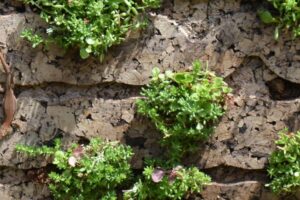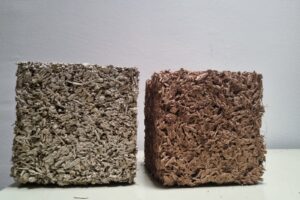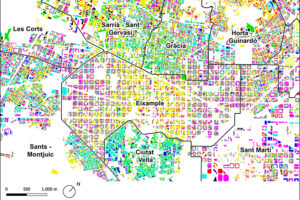
OCEAN: Application for Optimising Energy Consumption in High-Power Electrical Devices
May 8, 2025
HARMONIZE: Enhanced Membrane Distillation and Crystallisation Technologies for Ammonia Product Recovery Approaching Zero Waste
May 13, 202512/05/2025
The digitalisation of human senses has advanced significantly in areas such as vision, hearing and touch. However, smell and taste continue to present a technological challenge, as their analysis relies on the identification of volatile or dissolved chemical compounds. While there are various sensors on the market capable of detecting specific gases and substances, they often lack the versatility required for comprehensive recognition of complex odours, showing limitations in adapting to different combinations of compounds.
In the field of artificial olfactory detection, various technologies have been explored that make use of the interaction between volatile compounds and sensing surfaces, generating changes in electrical properties such as conductivity. These phenomena—affected by factors like temperature and compound concentration—provide data that can be analysed to identify odours.
In this context, an innovative solution has been developed to offer greater flexibility and transparency in odour recognition using artificial intelligence. This approach focuses on the ability to easily and adaptively integrate new odours into the identification system. Furthermore, being an open-source solution, it gives users the freedom to customise and adapt it to their specific needs, fostering innovation and collaboration in the advancement of artificial olfaction.
The architecture of this solution is based on the use of efficient neural networks designed to run on low-cost microcontrollers. This enables the implementation of odour recognition systems in a wide range of devices and applications. A key feature of the solution is its ability to process sensory information in an optimised way, even allowing the sequential application of multiple AI models on the same acquired data. This feature opens the door to recognising a considerable number of odours using limited computational resources, enhancing the efficiency and versatility of olfactory detection systems.

Technology
You want to know more?
Related Projects
- The La Volta project foresees the construction of a large Catalan vault pergola within the Llars Mundet campus, in the Montbau neighbourhood (Horta-Guinardó district). This structure will become a new architectural landmark for Barcelona, combining traditional construction techniques with contemporary innovation. The project involves the Rehabilitation and Architectural Restoration Research Group (REARQ), at the Universitat Politècnica de Catalunya - BarcelonaTech (UPC), and is led by the Architects’ Association of Catalonia (COAC) and the Barcelona Provincial Council.
SATE-VEG: A system for energy renovation of buildings that helps reduce the urban heat island effect
Researchers from the Architecture, Energy and Environment (AiEM) group at the Universitat Politècnica de Catalunya - BarcelonaTech (UPC) have developed SATE-VEG, an external thermal insulation system with a vegetal coating that offers seasonally adaptive thermal behaviour, enhances urban biodiversity and promotes positive health effects. The system is made from organic materials, requires low maintenance and consumes minimal water.- A research team from the Interdisciplinary Group on Building Science and Technology (GICITED) at the Universitat Politècnica de Catalunya – BarcelonaTech (UPC) is leading the BioSAFE project, which aims to develop sustainable building envelopes —mainly façades— designed according to sustainability, comfort and safety criteria, with particular attention to their acoustic behaviour and fire performance.
- The Architecture, Energy and Environment (AiEM) research group at the Universitat Politècnica de Catalunya - BarcelonaTech (UPC) has characterised Barcelona’s residential buildings according to their capacity to adapt to climate change. This study is part of the project ‘VeUvE: Urban havens for vulnerable zones’. The work highlights the climate inequality conditions present across different areas of the city and will help to better define the priorities and energy renovation strategies for its districts.




